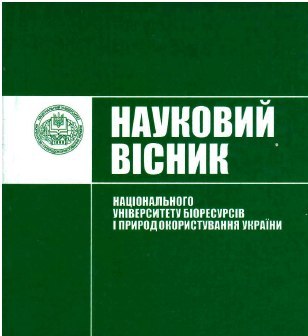Features in translation of English phraseology
DOI:
https://doi.org/10.31548/philolog0(276).2017.0160%20-%20165Abstract
The topic highlights the main issues in teaching the basic ways of translating phraseological units. Defines the main attractions and rules that every specialist of his business should know. And, above all, the essence of the article is to understand the very concept of phraseology, and how their translation can differ on the understanding of the text as a whole. Therefore, when studying this topic, one must take into account that the culture of the country from which the phraseology is translated may differ from the culture to which it is translated. It should also be remembered that the translation should not be verbatim, but close in meaning.
So, the problem of the translation of phraseologisms was actively investigated by such scholars as: R.P.Zorivchak, O.I.Cherednichenko, S.I. Vlakhov, A.V.Kunin, S. Florin, D. V. Uzzchenko, V. Ya. Teklyuk, A. I. Molotkova and others.
The article is devoted to the study of phraseological units, their way of translation into the Ukrainian language. Explains the main techniques for translating phraseological units. And explains how much the transfer in the translation of phraseological units is a difficult task. The choice of the types of translation depends on the features of the phraseological units themselves, the translator must recognize and be able to convey their values, brightness and mood.
Based on the study, one can conclude that there are two main ways of translating persistent phrasal combinations: phraseological and non-phraseological.
Important in the article is the realization of how peoples in countries are different and how they are similar. Also, the main purpose of the article is to understand that most often phraseological units are found in the literature of all styles and the specialist has no right to admit inaccuracies in the translation of phraseological units.
There are such ways of translating phraseological units as: phraseological equivalent, analogue, descriptive translation, contextual replacement and tracing.
The prospect of research may be further research on this topic and a deeper study of phraseology. You can also create other translations for already existing phraseology and thus distribute options for the correct transmission of statements.
References
Vlahov, S. I. (1980) Untranslatable in translation / S.I.Vlakhov, S. Florin. - M.: International Relations, 342.
Zorivchak, R.P. (1989) The phraseological unit as a translation class category (based on the translation of works of Ukrainian literature in English) / R. P. Zorivchak. - L.: View of Lviv, 216.
Kunin A.V. (2005) Course of phraseology of contemporary English language: textbook for institutes and faculties of foreign languages / A.V. Kunin. - 3rd ed. – Dubna: Phoenix, 488.
Lychuk, M. I., Shynkaruk, V.D. (2001) Stupeni frazeolohizatsii rechen [Stages of the phraseological process within sentences].monography. – Chernivtsi: Ruta, 135
Basic ways of translating English phraseologisms. Available at:http://int- konf.org/konf052013/322-gomzyakova-o-yu-osnovn-shlyahi-perekladu-anglyskih- frazeologzmv.html
Basic ways to translate phraseological units.Available at: https://essuir.sumdu.edu.ua/bitstream/123456789/39226/1/Krevsun.pdf
Phraseologisms.Available at:
http://verano.rv.ua/navchannya/frazeologizmi- shho-take-frazeologizmi/
Downloads
Published
Issue
Section
License
Relationship between right holders and users shall be governed by the terms of the license Creative Commons Attribution – non-commercial – Distribution On Same Conditions 4.0 international (CC BY-NC-SA 4.0):https://creativecommons.org/licenses/by-nc-sa/4.0/deed.uk
Authors who publish with this journal agree to the following terms:
- Authors retain copyright and grant the journal right of first publication with the work simultaneously licensed under a Creative Commons Attribution License that allows others to share the work with an acknowledgement of the work's authorship and initial publication in this journal.
- Authors are able to enter into separate, additional contractual arrangements for the non-exclusive distribution of the journal's published version of the work (e.g., post it to an institutional repository or publish it in a book), with an acknowledgement of its initial publication in this journal.
- Authors are permitted and encouraged to post their work online (e.g., in institutional repositories or on their website) prior to and during the submission process, as it can lead to productive exchanges, as well as earlier and greater citation of published work (See The Effect of Open Access).

